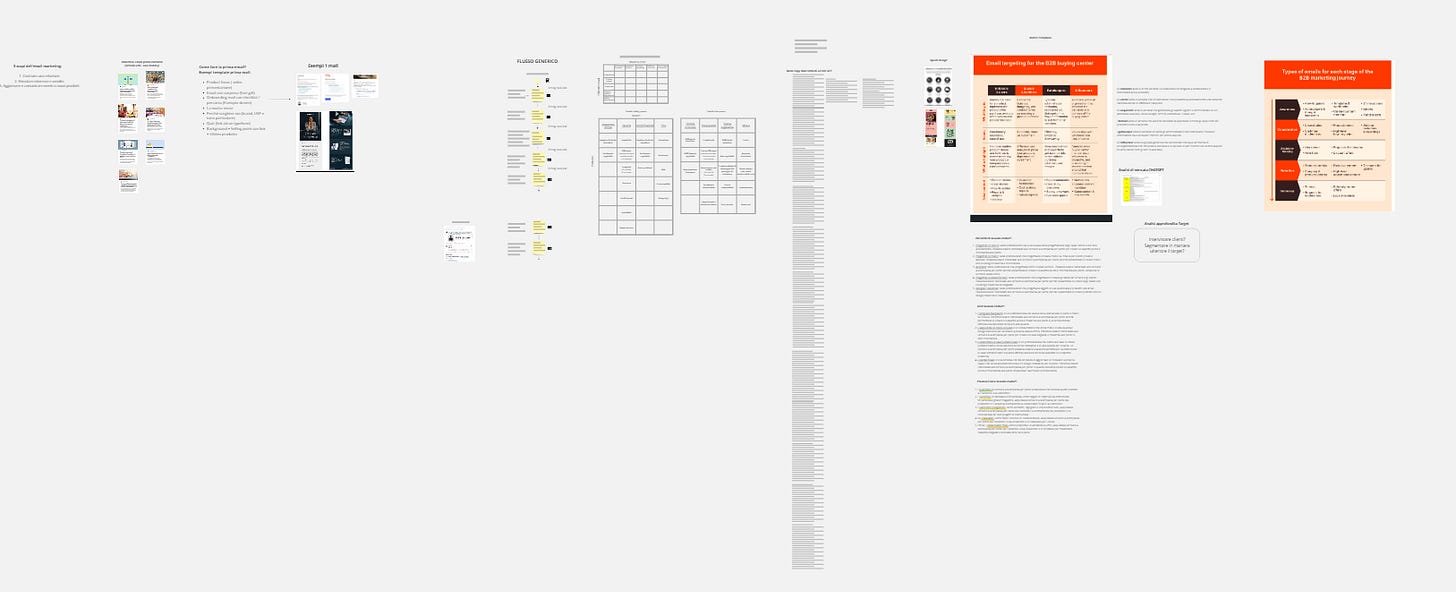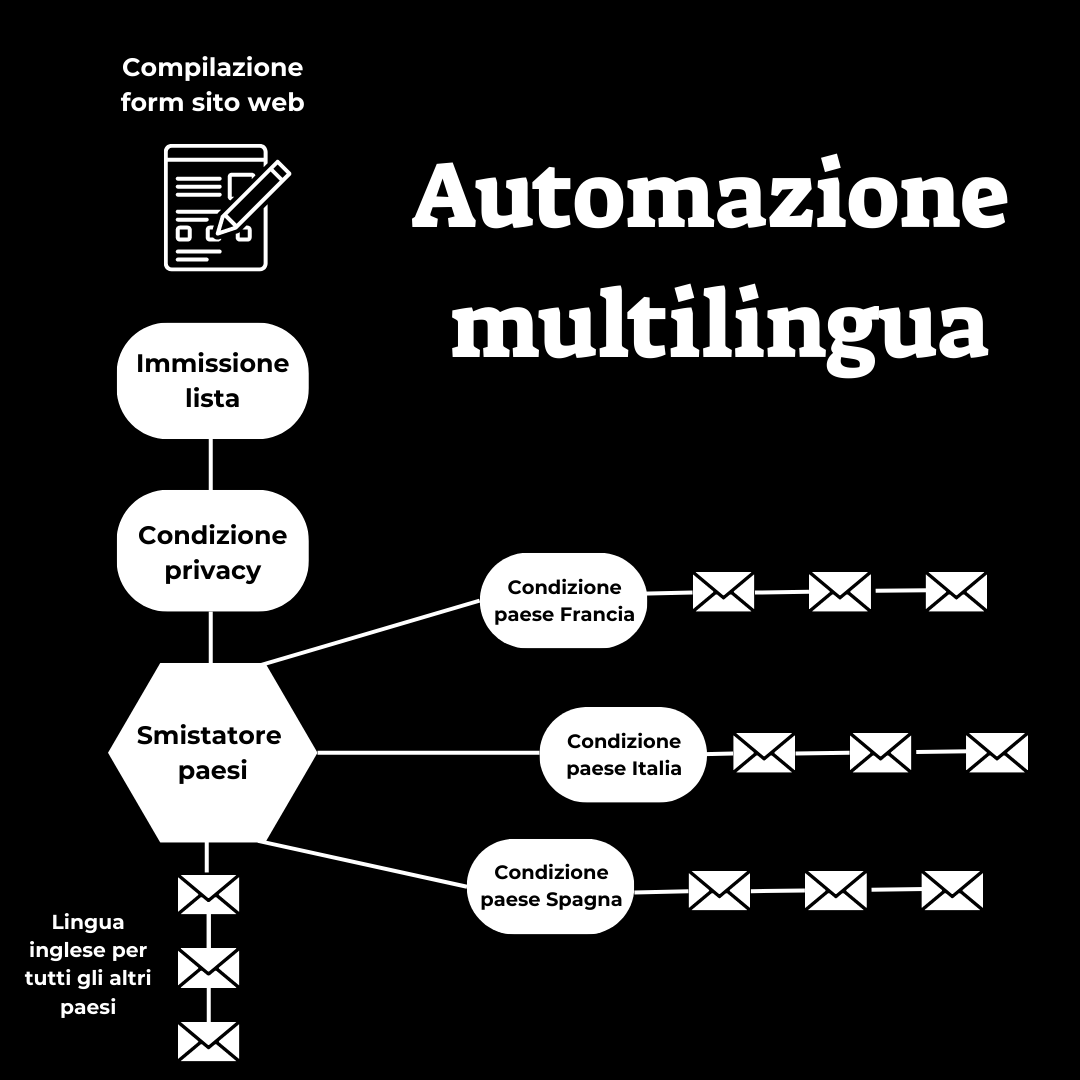How I Created a Multilingual Newsletter Automation for a Multinational Company
Practical tips for developing a multilingual newsletter
Welcome back to Gian's Lab!
In this article, I will talk about how I created a newsletter in 4 languages for a multinational company operating in the construction sector.
I couldn’t find any online testimonials about a project like this, which is why I believe it will be interesting for anyone who might face a similar challenge in the future.
After joining a large company in my area, I noticed that the company’s website had a specific button to subscribe to the newsletter, but doing so resulted in no outcome or effect.
People could subscribe, and there were several subscribers in the database, but no newsletter existed, and no emails were being sent.
I later discovered that the newsletter was one of many projects “in progress” that had never been completed due to a lack of time and resources.
Thus, one of the first projects assigned to me was to bring this newsletter to life.
The first thing I did was unleash some divergent thinking, creating a whiteboard on Miro and starting to jot down all the ideas I had in mind:
I gathered a series of articles about creating effective and distinctive newsletters.
I analyzed the issues and the tools we had available to create this series of processes.
I tried to give it structure by outlining a series of possible topics.
One of the biggest challenges was definitely the limited time our team had to dedicate to this initiative.
Since we didn’t have the necessary time to create and send a one-off email weekly or even monthly, we thought that, to get started, it was essential to keep things simple and efficient, which perfectly aligned with creating one or more automations that, once set up, would autonomously do the heavy lifting for us.
The other challenge was the language factor.
The company is based in 5 different countries and sells worldwide.
Consequently, we had to choose one or more options and adapt them to the type of automation we were going to create.
Once these premises were clear, the structure became much more defined.
What took the most time was the actual creation of the first emails.
Choosing the tone, design, and topics for a highly technical product like ours was really complex.
Once created, these emails were translated into 3 designated languages by some internal resources within the company.
We opted for: Italian, Spanish, French, and English for all other countries.
The process went more or less as follows:
Choose a series of topics that would allow for a variety of content over time, also based on the topics prioritized by the company.
Develop the tone, style, and sender of the emails.
Design a layout that kept consistent colors, buttons, and text formatting across the different emails.
Once the structure of the first emails was created and the topics chosen, the content side was completed in a few weeks.
The next step was to technically build the automation.
To do this, I had to consider a few aspects:
The contact points where users can subscribe to the newsletter on our website and landing pages.
The fact that we use a CRM and its dedicated form tool, which are embedded across various pages of our website.
How to trigger different actions based on the various languages of the subscribed users.
Being very mindful of privacy issues by differentiating the different types of users based on the fields filled out in the form.
How to manage all the contacts who, although already subscribed to our newsletter, had never received any emails.
By bringing all these elements together, I created an automation with the main trigger being entry into our database.
In this case, since the forms were already synced with the CRM, I didn’t have much work to do.
At this point, I added a crucial condition.
To proceed with the automation, the user must necessarily check the newsletter subscription box present in our contact forms.
Subsequently, I added another condition with several branches.
The different branches were based on the country entered during form completion.
So, if the user fills out the form and enters Italy, Spain, or France as their country, they would automatically begin the process with 3 emails in the language of the country entered.
If the entered country was not one of these three, the user would automatically be directed to the email flow in English, dedicated to all other countries in the world.
We chose a one-week interval between each email.
At this point, the issues related to languages and privacy had been resolved, with only the matter of the existing contacts left to address.
For practical reasons, tied to the capabilities of our email marketing tool, we decided to activate the automation so that all already subscribed users (around 1,000) would enter their respective flows.
This was done both to avoid wasting a good number of potentially interested contacts and to evaluate the open rate and interest, even after a significant amount of time had passed since their subscription.
The launch of the newsletter was very interesting.
Our first emails had an open rate between 30% and 40%, showing us that subscribers were generally interested in our communications.
These numbers are expected to rise over time since future subscribers will be more engaged and responsive to their subscriptions, hopefully guaranteeing us a higher open rate.
The most important takeaway from this process was the transformation of a company weakness into a significant communication opportunity, with the only ongoing effort being the creation of new emails.
A simple automation can allow a brand to communicate with people worldwide, in different languages, with valuable content for their target users.
Finding a simple solution to complex problems will always make a difference in the growth and development of any company.
Would you like to connect?
You can visit my website or add me on LinkedIn, where I share new short content every day about my experiences and what I'm passionate about.





